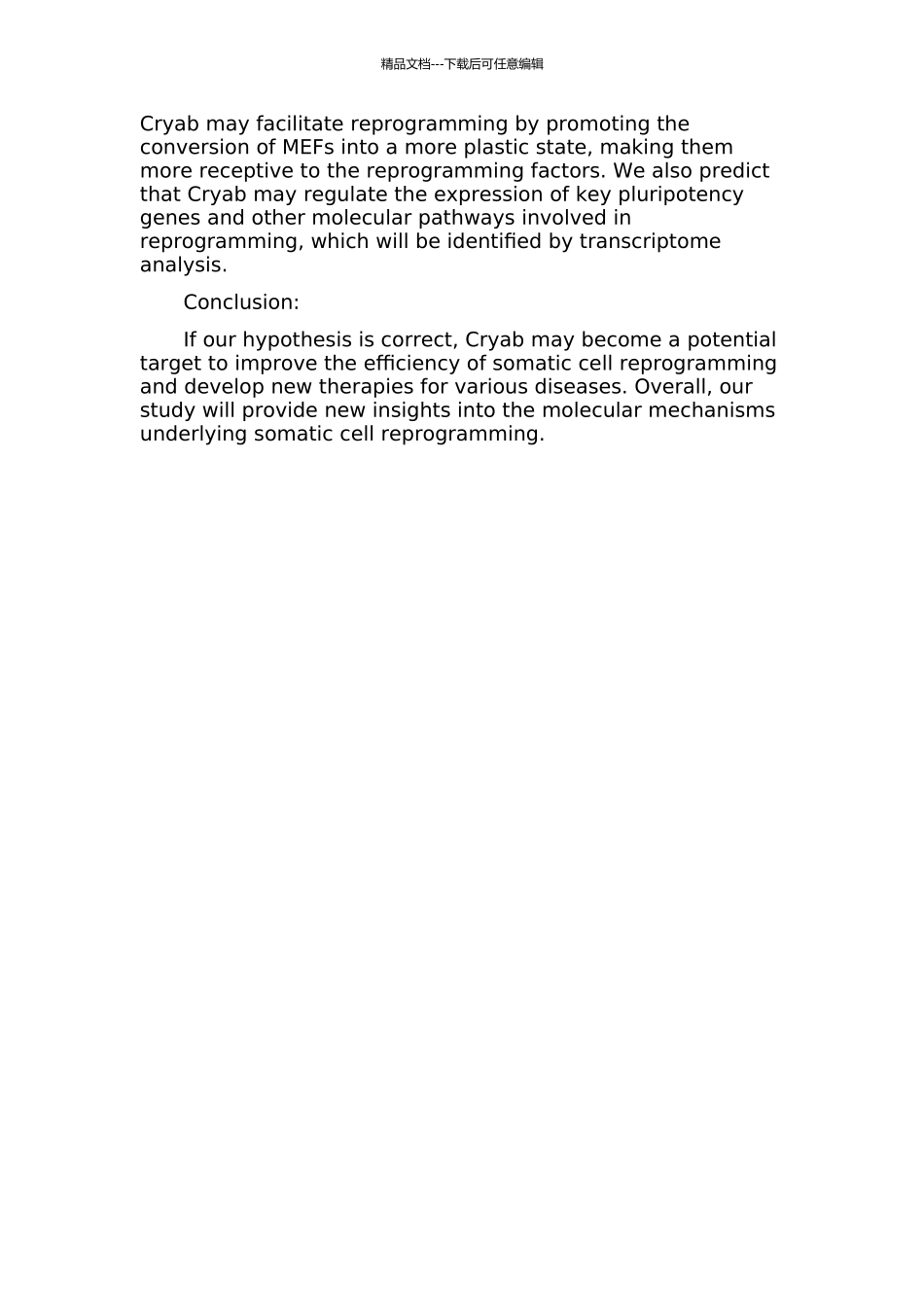精品文档---下载后可任意编辑Cryab 促进成体细胞的重编程的开题报告Title: Cryab promotes somatic cell reprogrammingIntroduction:Somatic cell reprogramming offers an excellent opportunity to develop patient specific therapies for various diseases that cannot be treated with conventional treatments. It involves converting somatic cells into induced pluripotent stem cells (iPSCs), which can be differentiated into various cell types for therapeutic use. However, the efficiency of somatic cell reprogramming is still relatively low, and the underlying molecular mechanisms are not fully understood. Cryab is a molecular chaperone that plays an important role in preventing protein aggregation and protecting cells from stress-induced damage. Recent studies have suggested that Cryab may also play a role in cellular reprogramming, but the exact mechanism remains unclear. Aim:The aim of this study is to investigate the role of Cryab in somatic cell reprogramming and to elucidate the underlying molecular mechanism. Methods:We will use mouse embryonic fibroblasts (MEFs) as the starting somatic cells for reprogramming. We will overexpress Cryab in MEFs and compare the reprogramming efficiency with control MEFs. We will use standard protocols for reprogramming, including transduction with lentiviral vectors expressing Oct4, Sox2, Klf4 and c-Myc. We will use various assays to evaluate the efficacy of reprogramming, including alkaline phosphatase staining, immunocytochemistry for pluripotency markers, and teratoma formation assay in vivo. We will also use transcriptome analysis to identify the molecular pathways involved in Cryab-mediated reprogramming. Expected outcomes:We expect that overexpression of Cryab will enhance the efficiency of somatic cell reprogramming. We hypothesize that 精品文档---下载后可任意编辑Cryab may facilitate reprogramming by promoting the conversion of MEFs into a more plastic state, making them more receptive to the reprogramming factors. We also predict that Cryab may regulate the expression of key pluripotency genes and other molecular pathways involved in reprogramming, which will be identified by transcriptome analysis. Conclusion:If our hypothesis is correct, Cryab may become a potential target to improve the efficiency of somatic cell reprogramming and develop new therapies for various diseases. Overall, our study will provide new insights into the molecular mechanisms underlying somatic cell reprogramming.

